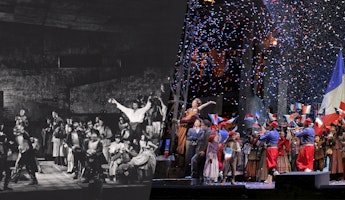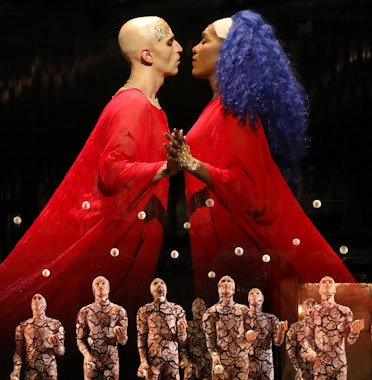Blog
November 4, 2025
Mimì and Violetta: Timeless 19th-Century Parisian Heroines
Several years ago, I wrote a program note for La Bohème, the opening production of LA Opera's 2019/20 season, comparing and contrasting Puccini’s opera with Verdi’s La Traviata. Both works owe their genesis to Paris of the 1840s and share a common theme. But the resemblance stops there. Each distinctive work, by the two greatest theatrical geniuses of Italian opera of the 19th and early 20th centuries, speaks in its own language.
West Side Story, of which Los Angeles Opera has just finished a run of ten performances, captures youthful love in a different and characteristic way in New York of the 1950s.
The vast majority of love stories emanating from 19th-century Italian operas are about the obstacles to a young pair of lovers, normally a soprano and a tenor. In both of these operas, untreatable disease allied with poverty, and fear of it, contributes to the environment which conspires against young love.
Many or most of the diseases so prevalent at the time are no longer a threat. Others of course have replaced them and in September of 2019 none of that seemed like an imminent menace.
Little did anyone know we were standing shortly before the outbreak of a worldwide pandemic. Their relevancy would be proved yet again.
Contrasting these two operas with West Side Story, the nature of modern medicine and the scourge of disease was modified but remained, yet poverty remained a menace and source of obstacles for young romantic lovers. And, although violence was unfortunately always part of the human fabric, the gun violence of the 1950s in America was very distinct from physical violence in 1840s Paris.
Tony is fatally shot by a single bullet, enough to produce the tragedy. Imagine, in the distance between 1957 and 2025, what theatrical impact gang warfare and the enormous availability of weapons on the street could produce today.
But let’s look back to that pre-Covid moment in time six years ago, while looking back 170 years to Paris, back to the Verdi of 1853 Venice, and the Puccini of 1869 Torino.
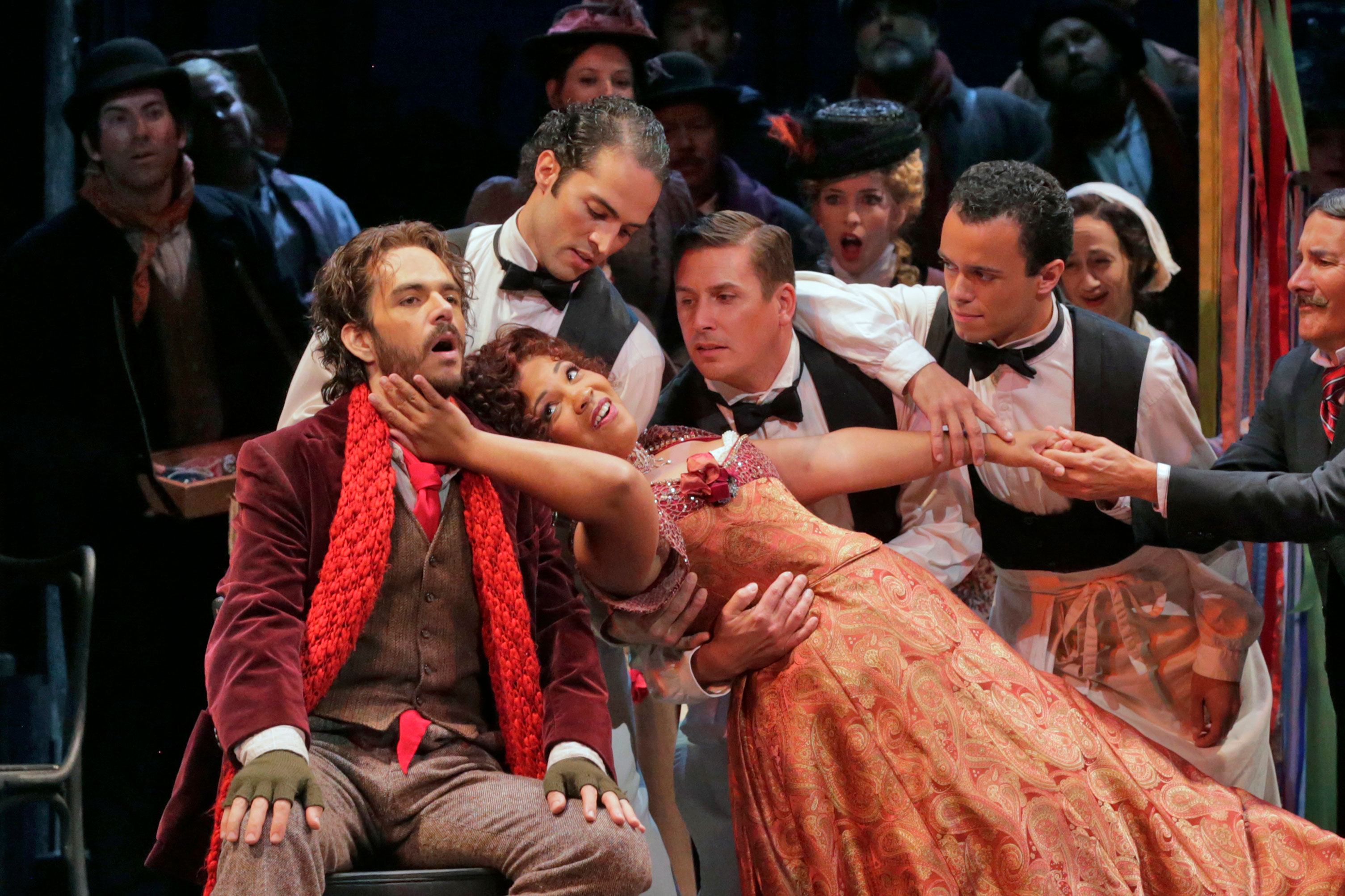
Mimì and Violetta: Timeless 19th-Century Parisian Heroines
September 2019
So, we are in 2019. As the final curtain of our 2018/219 season fell at the end of June, Giuseppe Verdi’s Violetta Valéry had just expired in the presence of her beloved Alfredo, his father, her housekeeper and her doctor. The heroine of La Traviata had died of consumption, her young death a tragedy.
The year: circa 1848. The place: Paris.
As the curtain rose on our 2019/20 season, a humble garret reveals the crowded living quarters of four poor but vivacious young artists; it will return in the final act as the scene of the tragic death of Mimì, in the presence of her lover Rodolfo, his three cohorts and their friend Musetta. The heroine of Giacomo Puccini’s La Bohème will die of consumption, her young death a tragedy.
The year: circa 1848. The place: Paris.
In that tumultuous year that saw revolutions and uprisings sweeping throughout Europe, the novel La Dame aux Camélias (The Lady of the Camellias) by Alexandre Dumas fils was published. Its success led to its adaptation for the stage in 1852. The author recounts a romanticized version of the life and death of a woman with whom he was infatuated.
In that same year, writer Henry Murger was forced to interrupt his publication of a series of articles about his friends, loves and experiences while living a “Bohemian” existence. But after the turmoil of 1848, he continued the next year, also agreeing to collaborate on a theatrical adaptation of his stories, the success of which caused it to be published in 1851 in the form of a novel as Scènes de la vie de Bohème.

Two novels, two French authors, one city: Paris.
Two operas, two Italian composers, premiered in two cities (Venice and Torino) as both men were approaching 40 years of age.
Dumas’ and Verdi’s heroine was based on the short life of Alphonsine Plessis, who later called herself Marie Duplessis. She was born in the provinces of Normandy, started professional life in Paris at the age of 16. She first worked in a dress shop, then became what was to be termed for much of the 19th century as a “grisette,” (see below) before ascending to the highest ranks of Parisian society.
The categorization and terminology describing these women was arbitrary and sometimes vague: Violetta (for simplicity I will refer to each by their operatic names) has been referred to as a “courtesan,” that is, the paramour of a wealthy lover. (The term is etymologically related to people, men and women, who were a part of the royal court).
Slightly lower on the financial hierarchy were the “Lorettes,” who were financially self-sufficient, as they were able to have multiple lovers. La Bohème’s Musetta is a Lorette; the name derives from the church Notre Dame de Lorette (which saw the baptisms of both Georges Bizet and Claude Monet) around which many of these women resided.
Still lower was the “grisette,” a young, usually poorly paid working-class woman; the expression referred to the inexpensive gray dresses they customarily wore. Gradually, the meaning accrued more characteristics, including those who led a “bohemian” lifestyle and those who supplemented their modest incomes by posing as models and sharing their favors with affluent men.
Two women from Murger’s novel, Francine and Mimi, were grisettes. Puccini drew characteristics from both to create an amalgamated Mimì for his opera.
Today, they might all be called sex workers, though it’s challenging to map this modern day term that frames sex as labor onto the complex 19th-century cultural systems that defined women’s roles.
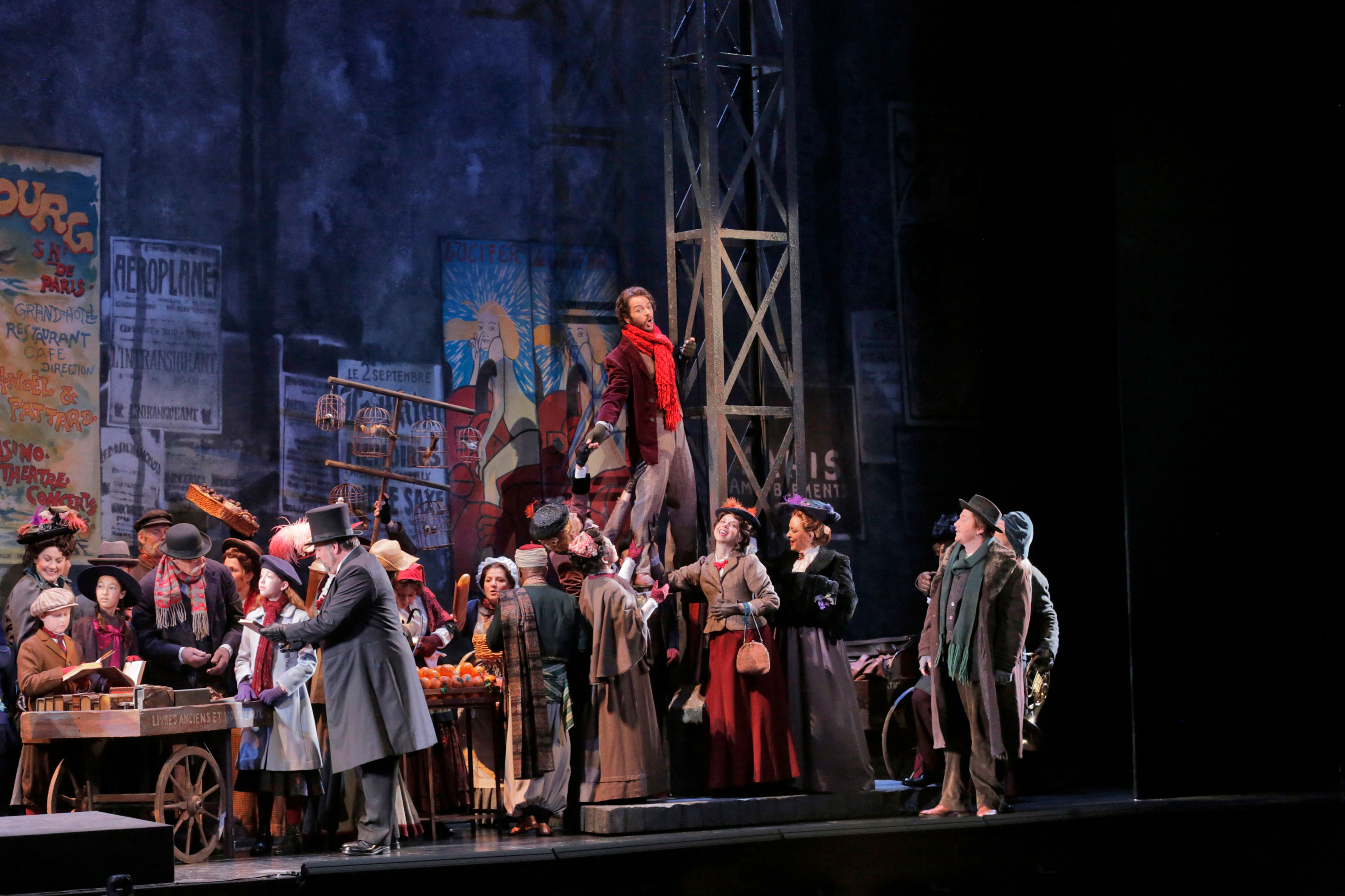
So the economic hierarchy, from top to bottom, was courtesan, lorette, grisette: Violetta, Musetta, Mimi and Francine. The differences between them would be minimal, details within a larger canvas. They all came from the provinces, worked in Paris, and rose as far as fortune would allow.
Then there were their fatal illnesses. Of these four women only Musetta will survive, the others will all succumb to tuberculosis, known at the time as consumption. Though there is nothing at all redeeming about suffering from that terrible disease, somehow it was adopted by writers at the time and romanticized, giving its victims an allure and appeal that seemed to deepen their tragedy. The gradual wasting away of the victim provided a telling parallel with the love stories that waxed and waned.
The two operas, however, are very different. Verdi was already a grand master and recognized as such when La Traviata premiered in 1853. When La Bohème premiered in 1896, Puccini was just on the cusp of a major success. Verdi was pioneering new material in his operas. It was extremely rare (and daring) to use contemporary subject matter, and it was bold to portray a woman who had “strayed from the way,” as Verdi’s opera’s title tells us. Having struck out into new territory, he just as abruptly changed direction and was never to write a similar opera again. He had, however, created a heroine for the ages and she, Violetta, has reigned supreme ever since.
The theme of the consumptive courtesan was essentially ignored by Italian composers until the next generation. Just one month shy of the fortieth anniversary of La Traviata’s premiere, Puccini produced an opera on a similar theme: Manon Lescaut. The subject, taken from Abbé Prevost’s 18th-century novel and also set in Paris, had already been visited by French composers Daniel Auber and Jules Massenet when Puccini decided to try his hand at the story. The result was a defining moment in the young composer’s life. Paris of the 18th century had served him well, and so would Paris of the 19th, which he would explore again, after La Bohème, in La Rondine and Il Tabarro.
Puccini then faced off with the young and already successful Ruggero Leoncavallo in 1896 and 1897, each composing his own operatic version of La Bohème. It was clear, first from Manon Lescaut, that bohemian/working-class/romanticized “illicit” women tantalized the public and won its sympathy. Leoncavallo serves up very different episodes from Murger’s stories, and places as much attention on Musetta and Marcello as on Mimì and Rodolfo. Leoncavallo’s Bohème never attained the success of Puccini’s and has remained a rarity. Puccini’s Bohème took the operatic world by storm and has remained among the most popular operas ever since.
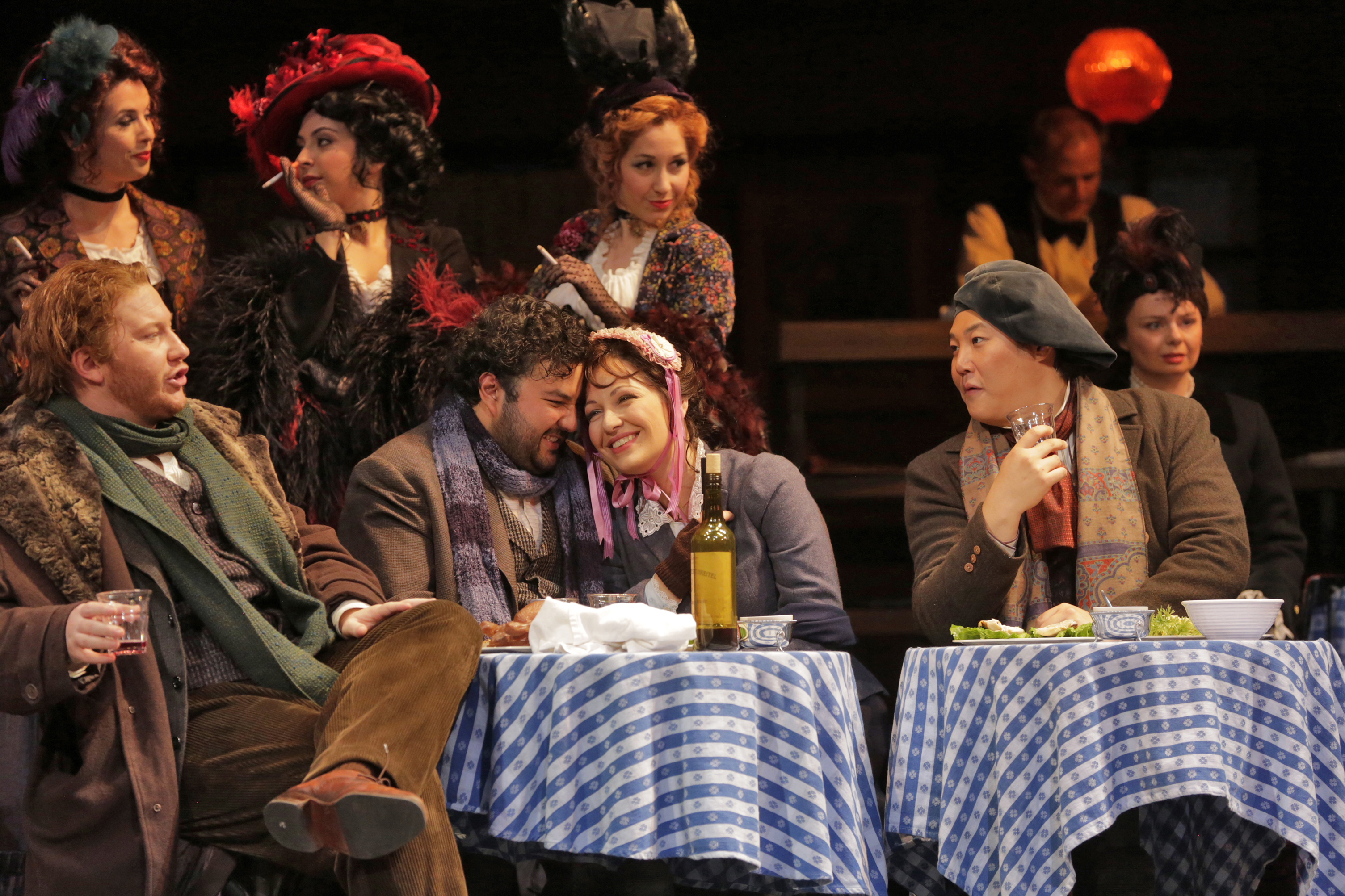
It is interesting to note that although there is much in common in the substance of Bohème and of Traviata (the details, of course, differ), the music of each is distinct, as is each composer’s compositional approach to theater.
Puccini takes off not from the Verdi of La Traviata, but from the Verdi of Otello and Falstaff. By the 1890s Verdi—retired and aged but not yet deceased—had transformed the operatic structure into long, through-composed acts performed without interruption. They were no longer divided up into “stop and go” “numbers”: arias, duets etc. The combined wisdom and genius of modern Italy’s greatest composer and that of Germany’s Richard Wagner had provided the models for the next generation.
To fully appreciate Bohème’s new and daring innovation is to realize that Puccini had successfully combined comedy and melodrama in a way that both Wagner and Verdi had not. Both of these titans of the previous generation had essentially accepted and maintained the stricter division of serious and comic musical theater. Die Meistersinger and Falstaff, both masterworks on every level, were indeed comedies but embodied an emotional and humanizing depth rarely achieved in the history of classical opera. Each work was one of a kind, as the composers spent most of their lives producing serious drama.
As for comedy, Verdi had experimented—dabbled, perhaps—in party scenes (Rigoletto, La Traviata), comic scenes, and light-hearted characters (Fra Melitone in La Forza del Destino, Oscar in Un Ballo in Maschera) but never, until Falstaff, had he produced a successful comedy. (Un Giorno di Regno, his second opera, had been a failure, and that seemed to have scared him off for most of his life. Perhaps, before laying down his pen, he wanted to prove to himself that he could write a comedy).
Puccini brilliantly intertwined the comic and serious in La Bohème in a way that was equaled in the early 20th century only by Richard Strauss. It is noteworthy that, having successfully combined these once opposing elements, Puccini returned to melodrama. He featured comic episodes or characters in Tosca and Madama Butterfly but, like Verdi’s Falstaff, his gift for pure comedy only reemerged in Gianni Schicchi, a masterpiece. But his predilection and inspiration was for melodrama, and he essentially exhausted the idiom. None of his contemporaries or successors were ever able to surpass him.
Puccini and his librettists, Giuseppe Giacosa and Luigi Illica, extracted from Murger’s very episodic novel what they needed. As its title suggests, those were Scènes de la Vie de Bohème. They selected four scenes, skipped character development, and yet successfully engaged us in the drama: two young couples and the tragic consumptive death of the opera’s heroine. With characteristic theatrical ingenuity, Puccini threads levity and seriousness together. The first two acts are essentially humorous, or at least show how the young bohemians use humor to cope with poverty. Both the first and fourth acts start with the repartee and humor that defines the four young artists, only to abruptly shift gears with two coups de theâtre. At the midpoint of Act One, Mimì’s appearance inspires a life-changing, transformational scene of mutual love at first sight. Similarly, after a comic first half of Act Four, she reappears, returning to the bohemian’s garret to die.
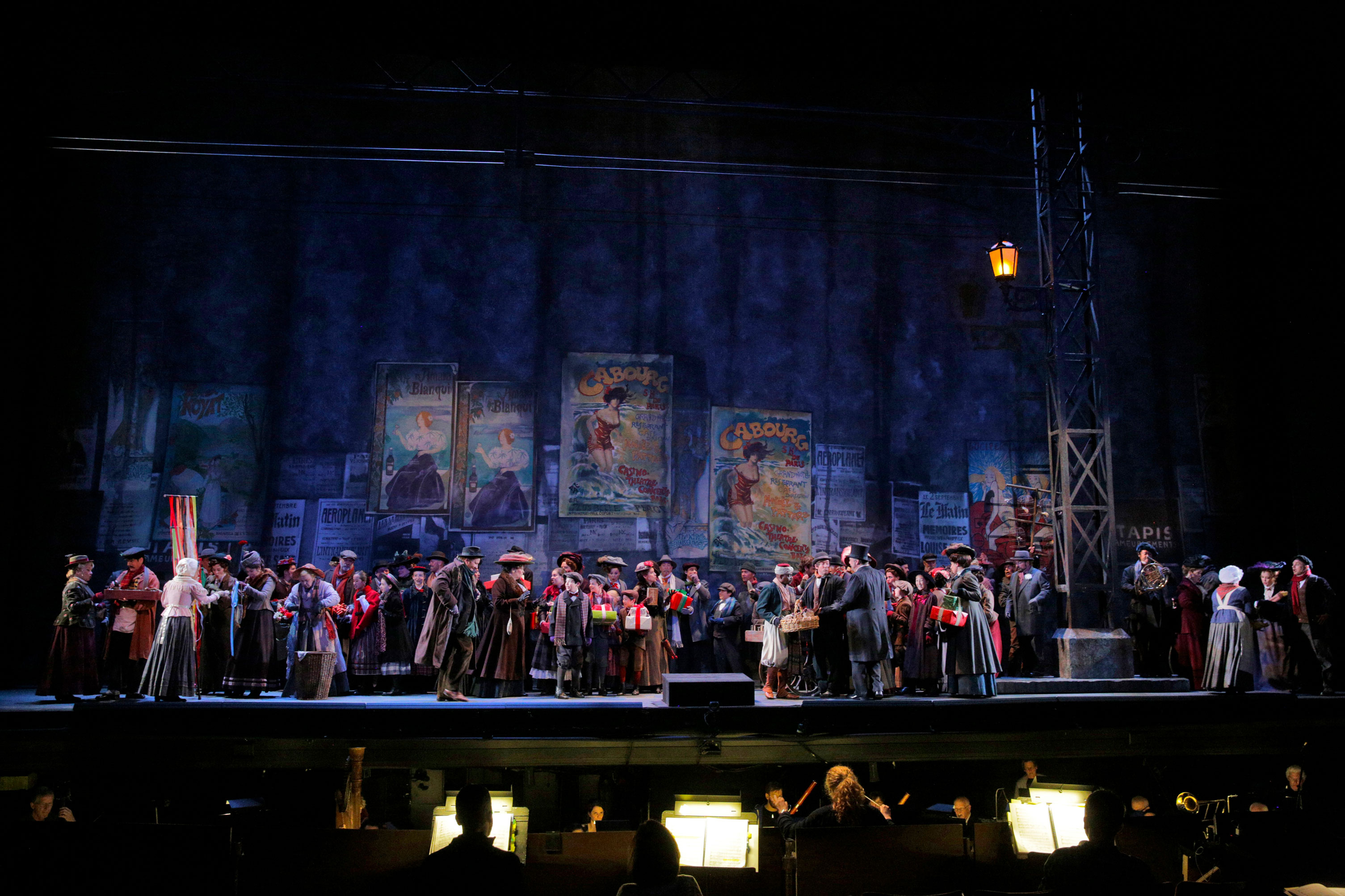
Puccini and company took only the scenes they needed from Murger, just as Pyotr Ilyich Tchaikovsky did in drawing scenes from Alexander Pushkin’s verse novel Eugene Onegin. Pushkin recounted a tale of a love that could have been, where the tragedy is not death but life: the tragedy of missed opportunity, life with the realization that two ships had passed in the night. Tchaikovsky reduced Pushkin’s work from a distanced and sometimes cold, objective look at contemporary society, to a highly emotional personal story that spoke to his muse.
Similarly, Puccini excised elements that would dilute the emotional experience he prepared for the audience. Importantly he does not recount the end of the novel, which shows the surviving characters growing into a comfortable, more “mature” life, remembering their bohemian days as just that, through distanced reflection. In Murger’s own words, as Rodolfo and Marcello settle down with steady work and a bourgeois existence: “The life of Boheme is the preface to the hospital, the morgue or the Academy.” Neither Puccini nor Tchaikovsky would have been true to themselves, nor to their muse, had they adopted that distance.
It must end in tragedy or at least melodrama. To intensify that tragedy, Puccini and his librettists transformed the original Mimi/Francine so that her status as “grisette” was de-emphasized. The audience was not to be troubled with what they might have considered her morally questionable lifestyle. He considerably polished her image, removing from view her rough edges and her not completely sympathetic personality.
Puccini ends his opera with the unforgettable final reunion with Rodolfo in the garret, which parallels the ending of La Traviata but has no precedent in Murger. The Mimi and Francine of Murger would both expire, not in their lovers’ arms, but in the cold anonymity of hospitals for the poor. Verdi often intended to challenge his public, and did so with La Traviata. But Puccini, who said “I write operas about the tragedy of little souls,” wanted to bathe it in tears.
In the end, it is significant that Violetta and Mimì, who share a life trajectory and experience in the ways of mid-19th-century Paris, became two of the most universally beloved women in operatic history.
© 2019/2025 James Conlon








/03-cosi/_dsc0996_pr.jpg?format=auto&fit=crop&w=345&h=200&auto=format)




